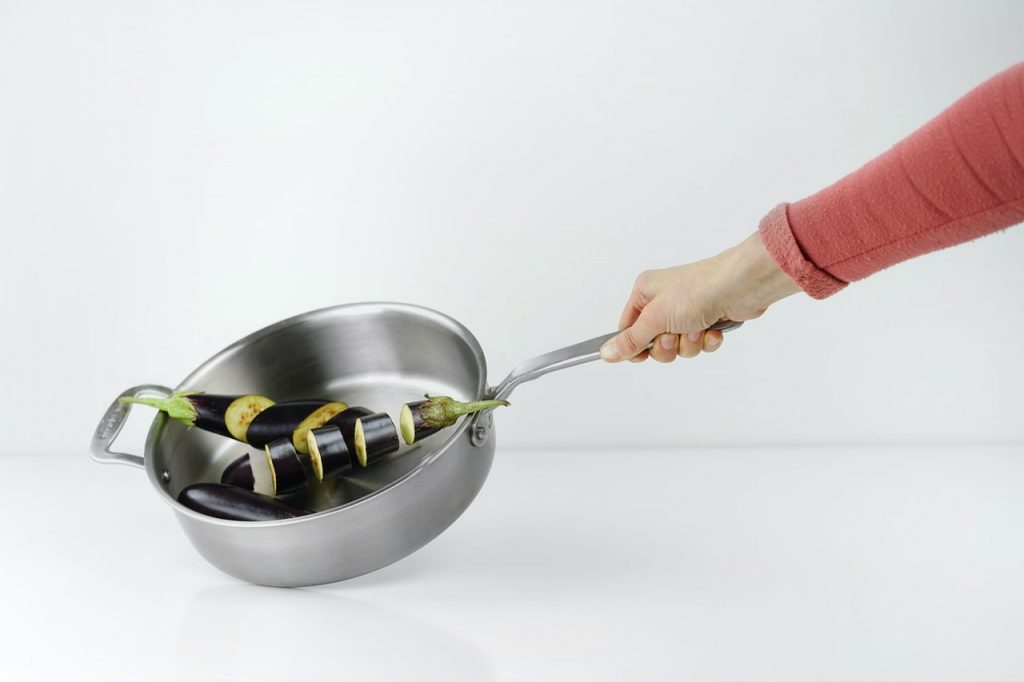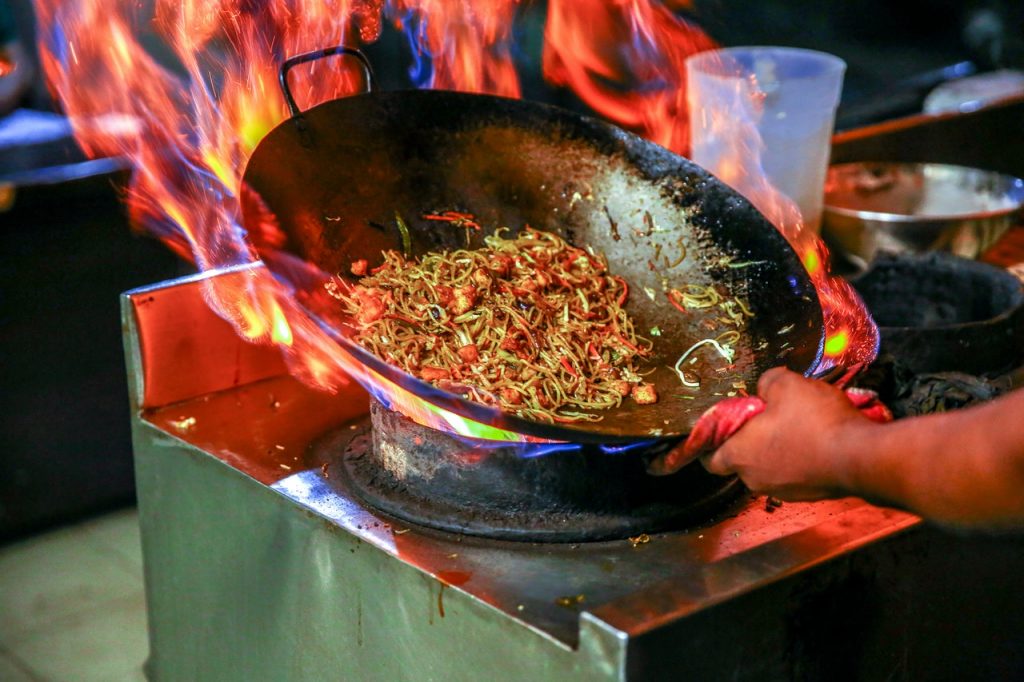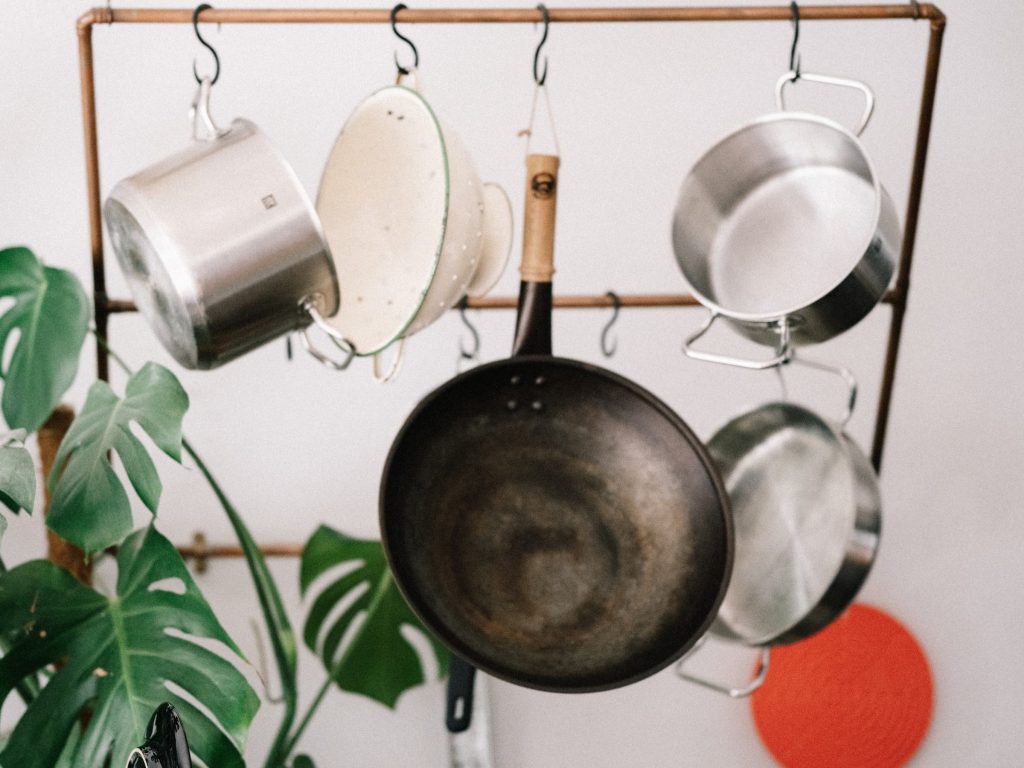In the kitchen, it’s normal to have a few accidents. One common accident is when oil or fat gets too hot and smoke, resulting in a burnt mess. If this happens to your stainless steel pan, don’t worry – there’s a way to get the burnt oil off.
If you think that the pan is beyond repair, you may have thought of throwing it out and buying a new one. However, you can still save your pan. Removing burnt oil from a stainless steel pan may seem a daunting task, but with the right steps, it’s not as difficult as you might think. There are a few earth-friendly ways to make your stainless steel pan shiny and new again.
Why Remove Burnt Oil From Your Pans?
If you’re thinking, “Why bother? I’ll just buy a new pan,” then think again. Not only will you save money by cleaning your pan instead of buying a new one, but you’ll also be reducing the amount of waste that goes into landfills.
When oil or fat gets too hot and starts to smoke, it can leave a burnt residue on your pan. This burnt residue can be difficult to remove, and it can make your pan look old and dirty. In addition, the burnt residue can affect the flavor of your food. Over time, the burnt oil will start to corrode the stainless steel if not removed. If you want to keep your stainless steel pan looking shiny and new, it’s important to remove the burnt oil.
5 Different Methods Explained

There are a few different ways to remove burnt oil from your stainless steel pan. You can use common household items like baking soda or white vinegar. Or, you can purchase a commercial cleaner specifically designed for removing burnt oil from stainless steel pans.
🗸Baking Soda, Vinegar, and Water
One common way to remove burnt oil from a stainless steel pan is to use baking soda, vinegar, and water. Baking soda is a mild abrasive that can help to remove the burnt oil from the pan. It is a natural cleaner and degreaser, and it’s safe for use on stainless steel. Vinegar is a natural cleaner that will help to break down the burnt residue.
To remove the burnt oil using baking soda, you’ll need:
- 1 cup water
- 1 cup vinegar
- Two tablespoons of baking soda
- Scouring pad and dish soap
1. Add the water and vinegar to the pan and set it on the stove. Bring it to a boil. As the mixture boils, the burnt oil will loosen and float to the surface.
2. Turn off the heat and add the baking soda.
3. Get rid of the solution and scrub the stainless steel pan with a scouring pad.
4. Add more water and baking soda if you’re left with stubborn stains.
5. Leave for a few minutes, and wash the pan as usual with dish soap and a scouring pad.
6. Rinse the pan with warm water and dry it with a clean towel.
🗸Aluminum foil
If you don’t have any baking soda or vinegar, you can use aluminum foil to remove the burnt oil from your stainless steel pan. Aluminum foil is a good alternative if you’re in a hurry and don’t have time to run to the store for supplies.
To remove the burnt oil using aluminum foil, you’ll need:
- Aluminum foil
- 2-3 tablespoons baking soda
- Hot water
1. Cover the bottom of the pan with baking soda.
2. Add some water and create a paste.
3. Get a sheet of aluminum foil and crumple it up.
4. Rub the aluminum foil over the paste in a circular motion. The baking soda will help to remove the burnt oil from the pan.
5. Wash the pan with soap and water, using a soft sponge or dishcloth, to remove any residue.
The aluminum foil will serve as a scouring pad to help remove the burnt oil from your pan. You won’t need to exert effort when scrubbing, as the aluminum foil will do most of the work for you. Also, you may need to repeat the process since the baking soda makes it hard to see the areas that still need cleaning.
🗸Boiled Lemons
Boiled lemons are another natural way to remove burnt oil from your stainless steel pan. Lemons are acidic, which makes them effective for breaking down burnt residue. In addition, the scent of lemons can help to freshen up your pan.
To remove the burnt oil using boiled lemons, you’ll need:
- Three lemons
- Water
- Scouring pad
1. Cut the lemons in half and put them in the pan.
2. Fill the pot with water and bring it to a boil.
2. Let them simmer for 5-10 minutes.
3. Remove the pot from the heat and let it cool for a few minutes.
4. Throw out the lemons and water.
5. Using the scouring pad, rinse and remove any leftover residue.
🗸Dishwasher Tablet
Suppose you don’t want to use any harsh chemicals or natural remedies. In that case, you can try using a dishwasher tablet to remove the burnt oil from your stainless steel pan. Dishwasher tablets are effective at breaking down grease and burnt residue.
To remove the burnt oil using a dishwasher tablet, you’ll need:
- One dishwasher tablet
- Water
1. Fill the pan with a bit of water.
2. Place it on the stove and set it to low heat.
3. Remove the pan from the stove and let it cool for a bit.
4. Scrub the burnt oil with the dishwasher tablet.
5. Wash the pan with soap and water, using a soft sponge or dishcloth, to remove any residue.
🗸Dryer Sheet
A dryer sheet can also be used to remove burnt oil from your stainless steel pan. The fabric softener in the dryer sheet will help break down the grease and burnt residue. In addition, the dryer sheet will leave a fresh scent in your kitchen.
To remove the burnt oil using a dryer sheet, you’ll need:
- One dryer sheet
- Dish soap
- Warm water
1. Add a few drops of dish soap and a bit of warm water to the pan.
2. Place a dryer sheet in the pan and let it soak for an hour.
3. Remove the dryer sheet and scrub the burnt oil with a scouring pad.
4. Wash the pan with dish soap and water using a soft sponge or dishcloth.
6. Dry the pan with a clean towel.
Ways of Removing Discoloration on Stainless-Steel Pans

Besides burnt oil, you may also find that your stainless-steel pans will develop a rainbow-colored discoloration over time. It can be caused by food residue, overheating, or using the wrong cleaning supplies. If you’re noticing discoloration on your pan, here are a few ways to remove it.
- Use distilled white vinegar to remove the discoloration. Add some white vinegar to your pan and let it sit for an hour. Then, wipe the area with a dishcloth or soft sponge to remove the discoloration.
- To remove chalky buildup from hard water on your stainless steel pans, create a solution of one cup of vinegar to three cups of water in the pan. Boil it for 10 minutes and turn off the heat. Let it cool before rinsing it with dish soap and water.
- Rubbing alcohol can also be used to remove discoloration on your stainless steel pans. Simply add some rubbing alcohol to a clean cloth and rub it onto the affected area. Rinse with dish soap and water afterward.
- Suppose you’re looking for a more natural way to remove the discoloration. In that case, you can try using lemon juice or baking soda. Add some lemon juice or baking soda to a clean cloth and rub it onto the affected area. Rinse with water and soap after.
- If you have a leftover tomato sauce, you can use it to remove the discoloration on your stainless steel pans. The acid from the tomato creates a reaction with the discoloration. Simply add tomato sauce or crushed tomato to the bottom of the pan and let it sit overnight. It would be best to let it simmer for ten minutes for better results. Then, remove the tomatoes sauce and rinse as usual.
General Care for Your Stainless Steel Pans

Stainless steel pans are a great addition to any kitchen, but they require some proper care to maintain their shine and luster. Here are a few tips for taking care of your stainless steel pans:
🍳Let it dry immediately
Don’t let the food sit for a long time in the pan. Transfer them to a food container and wash the pan. To avoid your stainless steel pans from having water spots, make sure to let them dry immediately after washing. Don’t let it sit in the sink or on the countertop to dry. If you don’t dry it right away, water spots appear.
🍳Don’t use abrasive cleaners
Stainless steel is a soft metal, so you don’t want to use any harsh abrasive cleaners on it. Harsh cleaning solutions and coarse scrubbers can scratch the surface and leave your pan looking dull. Instead, use a gentle cleaner like dish soap or baking soda to clean it.
🍳Avoid using high heat
Using high heat can cause your stainless steel pans to discolor. If you need to use high heat, make sure to use a pan protector or cook with some oil to prevent the pans from coming into contact with the direct heat.
🍳Use wooden or silicone utensils
Using metal utensils can scratch your stainless steel pans. To avoid this, make sure to use wooden or silicone utensils instead.
🍳Take the chill off of cold foods
Putting cold foods into a hot pan can cause it to stick and may warp the pan. Stainless steel will compress when in contact with a cold object. To avoid this, make sure to take the chill off of cold foods before adding them to your pan. You can do this by letting it sit out at room temperature for 10 to 15 minutes or running it under some warm water.
🍳Heat the pan before adding oil
If you’re going to be cooking with oil, make sure to heat the pan before adding the oil. Also, adding the oil to the hot pan creates a “static” stainless steel, making its surface nonstick. While adding oil to a cold pan can cause the oil to splatter. By heating the pan first, you’ll avoid splattering and help the oil to heat evenly.
You can do a simple test to know if the pan is already hot for the oil. Drop a few drops of water on the pan. If the water dances around and evaporates quickly, the pan is ready for the oil. If the water droplets sit on the surface, the pan isn’t hot enough, and you’ll need to heat it for a minute or two before adding the oil.
🍳Don’t use it on high heat
Stainless steel is a great material for cookware because it’s durable and doesn’t corrode, but it does have a downside. It’s not a good conductor of heat, so using it on high heat for prolonged periods can cause the pan to warp. Try to use low heat, especially when preheating the pan, to avoid overheating and burning your food.
🍳Let the pan cool before washing it
Don’t rush to wash your pan after cooking. Soaking your hot stainless steel pan may lead to rusting and irreparable warping. Let it cool down before washing it with soapy water. If you need to speed up the process, you can run it under some cold water.
🍳Store it properly
Stainless steel pans are susceptible to rusting, especially if they’re not stored properly. Make sure to clean and dry them thoroughly after each use and store them in a dry place. If you have any extra room in your kitchen cabinets, try storing them horizontally instead of vertically to help keep water from pooling on the surface.
Frequently Asked Questions
Q: What is the best way to clean a stainless steel pan?
A: The best way to clean a stainless steel pan is to use a gentle cleaner like dish soap or baking soda. You should avoid using any harsh abrasive cleaners as they can scratch the pan’s surface.
Q: Why should I buy stainless steel pans?
A: Stainless steel pans are a great option for cookware because they’re durable and don’t corrode. They’re also nonstick, so you won’t have to worry about your food sticking to the pan.
Q: What is the difference between stainless steel and nonstick pans?
A: The main difference between stainless steel and nonstick pans is that stainless steel doesn’t have a nonstick coating. It means that you may have to use some oil or butter when cooking with stainless steel to prevent the food from sticking. Nonstick pans have a special coating that makes them nonstick, so you won’t need to use any oil or butter.
Q: What causes burnt oil in a stainless steel pan?
A: Burnt oil in a stainless steel pan is usually caused by too much heat. When the steel pan becomes too hot, the oil can smoke and eventually burn. You can avoid this by using low heat when cooking with stainless steel.
Q: What should I do if my stainless steel pan starts to rust?
A: If your stainless steel pan starts to rust, you should stop using it immediately. Rust can cause the pan to warp and become unusable. If the rust is only on the surface of the pan, you may be able to remove it with a gentle cleaner like dish soap or baking soda. If the rust has penetrated the pan, you’ll need to buy a new one.
Q: Can I put my stainless steel pan in the dishwasher?
A: Yes, you can put your stainless steel pan in the dishwasher. However, you should avoid doing this too often as it can cause the pan to rust. If you put it in the dishwasher, make sure to dry it thoroughly after each use.
Final Thoughts
Stainless steel pans offer high-quality conductivity and durability, making them a great choice for the kitchen. However, they’re not indestructible and require some care to keep them in good condition. Make sure to use low heat when cooking to avoid burning oil and food. When your pan got caught up with burnt oil, don’t worry!
Stainless steel is forgiving, and you can remove the burnt oil with the tips mentioned above. As for me, I prefer soaking the pan in hot soapy water and using a soft brush to scrub off the burnt food particles. Whatever method you’ll use, always make sure to dry and store your pan properly after each use to keep it in good condition for years to come.
